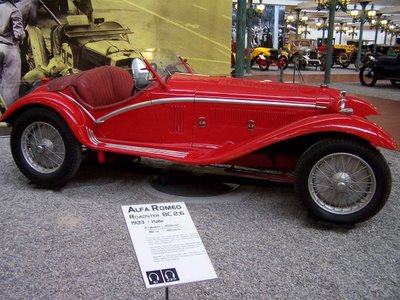Mulhouse
 Mulhouse is, forgive me for saying it, the Detroit of Alsace. It is the second largest city in the region, with only Strasbourg being larger. However, it lacks the charming city center and the quaint old buildings that draw in the tourists to cities like Colmar or Strasbourg. Seems that the combination of the industrial revolution and allied bombings during the 1940's left the local tourism board with a big challenge on their hands.
Mulhouse is, forgive me for saying it, the Detroit of Alsace. It is the second largest city in the region, with only Strasbourg being larger. However, it lacks the charming city center and the quaint old buildings that draw in the tourists to cities like Colmar or Strasbourg. Seems that the combination of the industrial revolution and allied bombings during the 1940's left the local tourism board with a big challenge on their hands.So Mulhouse is re-inventing itself as the city of museums. Not your ancient-history-arts-and-riches types of museums. Rather, it has the kinds of museums that fit the profile of this working-class town. The Eco-Museum is a living-history museum of a working farm of the mid 1800s. (Kind of a Conner Prarie goes to Europe.) Then they have the museum of trains, the museum of electrical appliances, and my personal favorite....the museum of wallpaper.
But the jewel in the crown is the French National Museum of the Automobile. Even if you don't like cars, you will enjoy spending a day here. We spent the day there last Saturday (Jan 21).

The picture above shows Chris and Jill Hagan standing outside the entrance to the Museum. They came up with the idea to visit the museum. They, along with Wade, Patrick, Mindy, Gabi, Theresa and I, went down for the day. Since the weather has been kind of crumby lately, it was a good day to spend indoors looking at old cars.
The museum has something on the order of 400 cars on display dating from the late 1800s to the present. Though you might find a Ford or two, the flavor is heavily European. Following is a small sampling.

 Above, the most famous car in the history of France, the Citroen 2 CV. The model above is a 1954. You still see these old beasts on the city streets and the open roads.
Above, the most famous car in the history of France, the Citroen 2 CV. The model above is a 1954. You still see these old beasts on the city streets and the open roads.
Here is Theresa shopping for her next car. This is a Bugatti from the 1930s. Bugatti was a French car maker with their main factor in Molsheim, just West of Strasbourg. They went out of business in the 1960s but the name was recently revived by Volkswagon and the Molsheim factory now makes a small number of cars by hand each year. The museum's collection of Bugattis from the 20s, 30s, and 40s is it's claim to fame. 
This a a Bugatti Royale from the 1920s, I believe. The car is a behemoth. It's road weight is around 3 1/2 to 4 tons. The tires are about 3 feet in diameter. You can probably guess that Bugatti did not make his money on volume, but rather made and sold a small number of cars to the high end of the market.
The Museum is also called the "Schlumpf Collection" because it was originally amassed by a local-boy-made-good named Fritz Schlumpf. Fritz and his brother Hans made a boatload of money in the early 20th centry by speculating in the financial markets and running a number of textile factories in Mulhouse. By all accounts, Fritz was a real b*#&))+d. Ruthless, cunning, and selfish. Somewhere along the way, he became absolutely consumed by a passion to build his collection of automobiles. He kept buying them, and buying them. He converted one of his old wool factories into his own private museum.
Then came a turn of events that could only happen in France. Fritz was so consumed by his passion to collect, that he had to liquidate his factories to sustain his habit. The local workers lost their jobs. Not too happy about that fact, the workers invaded the museum and took over the premises. They burned a couple of cars and refused to leave until the got some justice. They stayed there, waiting on the property for two years. In the end, the Schlumpf brothers fled to Switzerland, the French government took over the museum, and the poor workers were left to look for other jobs in Mulhouse.
Such is life. C'est la vie.
For those trivia buffs at home, the hood ornament at the top of this article comes from a Rolls Royce Silver Ghost.

0 Comments:
Post a Comment
<< Home